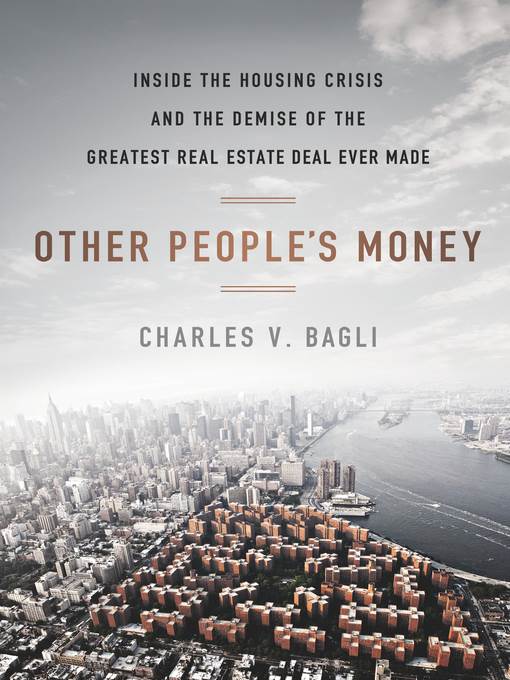
Other People's Money
Inside the Housing Crisis and the Demise of the Greatest Real Estate Deal Ever Made
کتاب های مرتبط
- اطلاعات
- نقد و بررسی
- دیدگاه کاربران
نقد و بررسی

February 18, 2013
In recounting the collapse of “the biggest real estate deal in history,” New York Times reporter Bagli provides an intriguing display of boom psychology perpetuating itself. His absorbing account of the transformation of Manhattan’s mammoth Stuyvestant Town–Peter Cooper Village apartment complex from a haven for moderate-income families to a developer’s dream captures the spirit of the frenzied real-estate market of the first few years of the 21st century. Bagli expands the controversial clash between developers seeking to deregulate rents and tenants concerned with marginalization of the middle class into a larger metaphor for wealth contending with basic needs. His focus, though market-based, is not exclusively economic; he also reviews, in the history of this apartment complex, the change of consciousness relating to civil rights and provides glimpses of a time when corporate paternalism seemed welcome and tenants reflexively accepted regimented conditions and rules. Current New Yorkers may derive wry amusement from the anger of tenants in 1952, when the complex owner sought to raise the monthly rent on four-room apartments to an astonishing $100. The reader interested in New York real estate history, its moneyed elites, or even the self-contradictory aspects of social investment should find ample material for reflection and enjoyment in Bagli’s account. Agent: David Vigliano, Vigliano Associates.

March 1, 2013
A detailed recounting of a gigantic affordable-housing failure in New York City amid the international economic collapse beginning in 2008. New York Times reporter Bagli documents what happened to Stuyvesant Town-Peter Cooper Village, from its post-World War II birth to its spectacularly expensive sale to a new owner in 2006 to its descent into bankruptcy four years later. The complex, meant to provide affordable rental apartments to thousands of residents, had been built and managed primarily by the Metropolitan Life Insurance Company. Although the MetLife reign had been filled with controversy, a large percentage of tenants continued to remain fiercely loyal to the owner. When MetLife decided to sell, the deal became the priciest real estate transaction in New York City history. The effective cost to the winning bidder, Tishman Speyer Properties, topped $6 billion. The institutional investors roped in to contribute to the purchase price meant Tishman Speyer made the purchase using other people's money. The author focuses on Rob Speyer, the second-generation scion of the real estate firm. The account of the failure is bracing from a variety of perspectives, including those of the tenants, the politicians, the investors and various levels of government. Bagli is less successful when he tries to place the disastrous investment within the context of the worldwide financial crisis. His attempt to describe the crisis in a relatively small number of pages fails to resonate in the same way that full-length books about the financial mess have resonated. Despite some flaws, Bagli's sourcing is impressive, and readers will welcome his ability to make arcane investment dealings comprehensible.
COPYRIGHT(2013) Kirkus Reviews, ALL RIGHTS RESERVED.

November 1, 2012
In 2006, real estate behemoth Tishman Speyer and its partner, BlackRock, bought Peter Cooper Village and Stuyvesant Town, a middle-class housing complex on Manhattan's East Side in New York, for $5.4 billion. Four years later, Tishman Speyer defaulted, and, just like that, investors from the Church of England to the California Teachers' pension fund lost everything. Meanwhile, MetLife made $3 billion, and eight residents of the complex had the gumption to sue--and won their case in court. Bagli, the New York Times reporter who broke this story, gives us a full chronicle. Not just local news; this, perhaps the biggest failure in real estate history, says a lot about the housing crisis that's landed us where we are now.
Copyright 2012 Library Journal, LLC Used with permission.

























دیدگاه کاربران